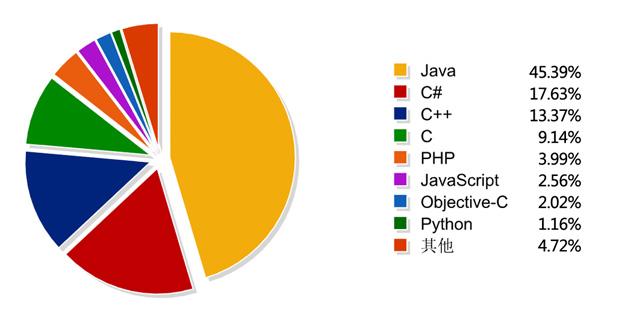C语言 ##运算符 – C语言零基础入门教程
目录
- 一.##运算符简介
- 二.##运算符使用
- 1.##运算符常规使用
- 2.##运算符定义结构体
- 三.猜你喜欢
零基础 C/C++ 学习路线推荐 : C/C++ 学习目录 >> C 语言基础入门
一.##运算符简介
在 C 语言关于 define 的文章中我们有介绍到:凡是以#开头的均为预处理指令,预处理又叫预编译。预编译不是编译,而是编译前的处理。这个操作是在正式编译之前由系统自动完成的。
C 语言除了#运算符,还有 ##运算符 ;与 #运算符类似,##运算符可用于类函数宏(带参宏)的替换部分。##运算符可以把两个记号组合成一个记号。例如,可以这样做:
/******************************************************************************************/
//@Author:猿说编程
//@Blog(个人博客地址): www.codersrc.com
//@File:C语言教程 - C语言 ##运算符
//@Time:2021/07/10 08:00
//@Motto:不积跬步无以至千里,不积小流无以成江海,程序人生的精彩需要坚持不懈地积累!
/******************************************************************************************/
#define XVALUE(n) x##n //将符号 x 和 n 合并为一个记号
#define YVALUE(n) y##n //将符号 y 和 n 合并为一个记号
#define ZVALUE(n) z##n //将符号 z 和 n 合并为一个记号
int XVALUE(1) = 10; //等价 int x1 = 10
int YVALUE(1) = 10; //等价 int y1 = 10
int ZVALUE(1) = 10; //等价 int z1 = 10
二.##运算符使用
1.##运算符常规使用
/******************************************************************************************/
//@Author:猿说编程
//@Blog(个人博客地址): www.codersrc.com
//@File:C语言教程 - C语言 ##运算符
//@Time:2021/07/10 08:00
//@Motto:不积跬步无以至千里,不积小流无以成江海,程序人生的精彩需要坚持不懈地积累!
/******************************************************************************************/
#include<stdio.h>
#define XVALUE(n) x##n //将符号 x 和 n 合并为一个记号
#define YVALUE(n) y##n //将符号 y 和 n 合并为一个记号
#define ZVALUE(n) z##n //将符号 z 和 n 合并为一个记号
#define NUM(a,b,c) a##b##c
int main()
{
int XVALUE(1) = 10; //等价 int x1 = 10
int YVALUE(1) = 10; //等价 int y1 = 10
int ZVALUE(1) = 10; //等价 int z1 = 10
printf("XVALUE(1) = %d
",XVALUE(1));
printf("NUM(1,2,3) = %d
",NUM(1,2,3));
return 0;
}
/*
XVALUE(1) = 10
NUM(1,2,3) = 123
*/
2.##运算符定义结构体
/******************************************************************************************/
//@Author:猿说编程
//@Blog(个人博客地址): www.codersrc.com
//@File:C语言教程 - C语言 ##运算符
//@Time:2021/07/10 08:00
//@Motto:不积跬步无以至千里,不积小流无以成江海,程序人生的精彩需要坚持不懈地积累!
/******************************************************************************************/
#include <stdio.h>
#define STRUCT(type) typedef struct _tag_##type type;
struct _tag_##type
STRUCT(Student)
{
char* name;
int id;
};
/*
//STRUCT(Student) 等价:
typedef struct _tag_Student Student;
struct _tag_Student
{
char* name;
int id;
};
*/
int main()
{
Student s1;
Student s2;
s1.name = "s1";
s1.id = 0;
s2.name = "s2";
s2.id = 1;
printf("Student s1 name: %s
", s1.name);
printf("Student s1 id: %d
", s1.id);
printf("Student s2 name: %s
", s2.name);
printf("Student s2 id: %d
", s2.id);
return 0;
}
/*
Student s1 name: s1
Student s1 id: 0
Student s2 name: s2
Student s2 id: 1
*/
C 语言可以先 [typedef](https://www.codersrc.com/archives/8854.html) 然后在定义,只要在某处最终把 struct 定义出来后,无论在任何地方都可以重新 typedef ,并不是必须先定义 struct 再 typedef;
三.猜你喜欢
- C 语言 数组下标越界和内存溢出区别
- C 语言 指针声明和定义
- C 语言 指针 p++ / p–
- C 语言 p++/§++/_(p++)/_p++
- C 语言 使用指针遍历数组
- C 语言 指针和数组区别
- C 语言 指针数组和数组指针区别
- C 语言 空指针 NULL
- C 语言 void 指针
- C 语言 野指针
- C 语言 函数值传递和址传递
- C 语言 函数缺省参数
- C 语言 函数不定长参数
- C 语言 函数指针
- C 语言 指针函数
- C 语言 回调函数 callback
- C 语言 typedef
- C 语言 define 定义常量
- C 语言 define 防止头文件重复包含
- C 语言 #pragma once
- C 语言 #include <> 与 #include “” 区别
- C 语言 const 修饰变量
- C 语言 const 修饰指针
- C语言 const 修饰函数
- C 语言 const 修饰函数参数
- C 语言 const 和 define 区别
- C 语言 #运算符
- C 语言 ##运算符
未经允许不得转载:猿说编程 » C 语言 ##运算符
本文由博客 – 猿说编程 猿说编程 发布!
